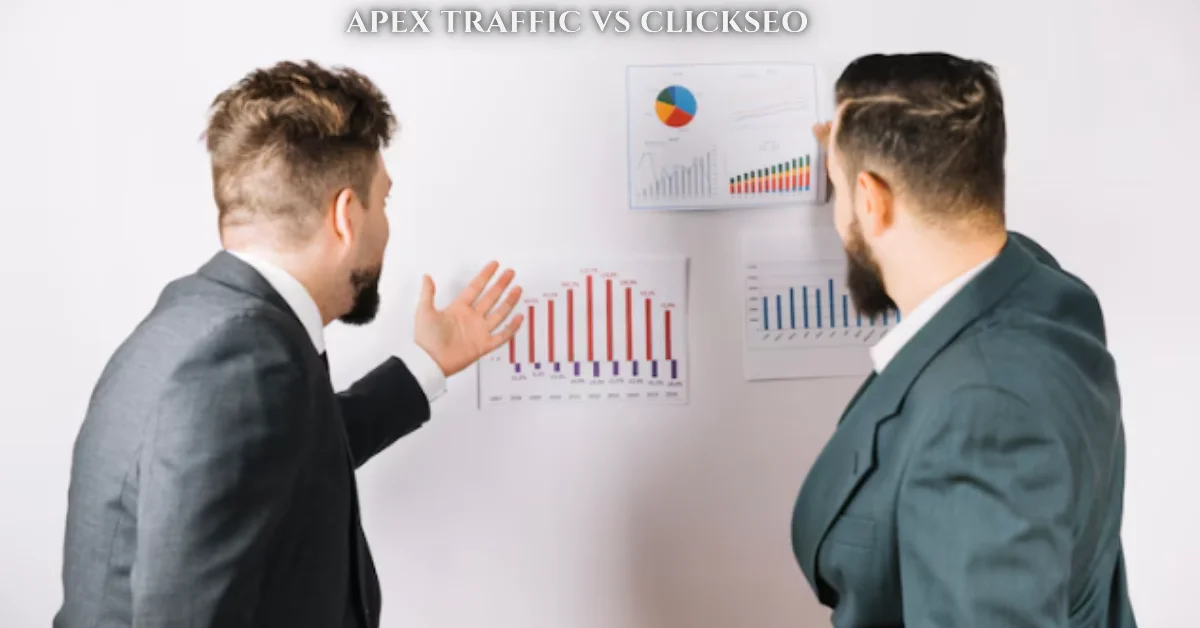SEO
Google Ads vs. Organic Search: When and Why to Invest in Paid Search

In today’s competitive digital landscape, every business aims to attract the right audience. With millions of potential customers searching online, ensuring visibility is essential. Two primary strategies dominate this space: organic search and Google Ads. While organic search builds your presence over time, Google Ads offers instant visibility. Understanding when and why to invest in paid search depends on your business goals, budget, and market conditions. The debate isn’t about choosing one over the other but rather finding the right balance. This article breaks down key considerations for investing in paid search, helping you make informed decisions to maximize your marketing efforts and ROI.
1. Organic Search: The Long-Term Strategy
Organic search refers to unpaid visibility in search engine results. It’s a long-term investment that hinges on creating high-quality content, optimizing for keywords, and earning backlinks. While it requires time and consistent effort, the benefits can be lasting and cost-effective. For example, a well-optimized blog post may rank for years, generating traffic without recurring expenses.
However, organic search isn’t without challenges. It takes time to build authority, especially in competitive niches. Businesses with immediate goals may find the wait unsustainable. Moreover, search engine algorithm changes can impact rankings, making it important to stay updated with SEO trends.
Organic search works best for businesses with long-term goals and limited budgets, but it’s not always the ideal choice for immediate results.
2. Paid Search: Immediate Visibility with Google Ads
Paid search allows businesses to appear at the top of search results almost instantly. Using Google Ads, you bid on specific keywords, ensuring your website gets seen by users actively searching for related products or services. This model guarantees targeted exposure and measurable outcomes.
Google Ads management plays a critical role in maximizing paid search effectiveness. From selecting the right keywords to refining ad copy, efficient management ensures you get the best return on investment. Additionally, tools like audience targeting and A/B testing can help optimize campaigns for better results. Paid search benefits businesses launching new products, running promotions, or operating in highly competitive markets where organic visibility is tough to achieve.
3. Cost Considerations: Comparing Paid and Organic Efforts
Budget is often the deciding factor in choosing between paid and organic strategies. Organic search requires upfront investment in SEO tools, content creation, and technical optimization. While these costs aren’t recurring, the results take time to materialize.
On the other hand, Google Ads demands ongoing financial commitment. Costs depend on the competitiveness of your keywords and your industry. Businesses with a higher customer lifetime value (CLV) can justify larger ad budgets as they reap the benefits of each conversion.
The key is to evaluate your goals. If immediate traffic and measurable results are critical, allocate more to paid search. For sustainable growth, balance this with an organic strategy.
4. Targeting: The Precision of Google Ads
Google Ads offers unparalleled precision when targeting your audience. You can specify criteria like location, age, interests, and even browsing habits. This level of customization ensures your ads reach the most relevant users.
Organic search, while powerful, doesn’t offer this control. Rankings depend on factors like keyword relevance and domain authority, which are broader and less direct. Businesses targeting niche markets or specific demographics often benefit more from paid search.
Paid search also supports remarketing, allowing you to reconnect with users who’ve interacted with your site before. These tailored strategies make Google Ads a great choice for campaigns with specific audience goals.
5. Measuring Results: Tracking Performance and ROI
Both organic search and Google Ads come with tracking tools, but the level of detail differs. Organic search relies on tools like Google Analytics to monitor traffic, bounce rates, and keyword rankings. These insights help refine your SEO strategy over time.
With Google Ads, performance metrics are immediate and precise. You can track impressions, click-through rates, conversion rates, and cost-per-click for each campaign. This level of transparency allows businesses to adjust campaigns in real time, ensuring optimal results.
Paid search’s measurable ROI makes it appealing for businesses that prioritize accountability and data-driven decisions. By contrast, organic efforts require patience and broader metrics for evaluation, which can make ROI harder to quantify initially.
6. Brand Awareness: Boosting Visibility Through Paid Ads
For businesses looking to make a mark quickly, paid search is an excellent tool to increase brand awareness. Google Ads ensures your brand appears in front of users actively searching for relevant products or services. Even if users don’t immediately convert, repeated exposure can reinforce your brand’s presence in their minds.
Unlike organic search, where ranking high requires consistent efforts and time, paid search guarantees placement above organic results, putting your business front and center. This can be particularly useful for startups or companies launching new offerings.
While organic search contributes to brand awareness over time, paid search accelerates this process, helping businesses build recognition in a competitive market.
7. Competitive Advantage: Outperforming Rivals
Paid search can help you outperform competitors by targeting their audience directly. With tools like competitive analysis in Google Ads, you can identify which keywords your rivals are bidding on and craft strategies to capture that traffic.
For instance, bidding on branded keywords associated with competitors can direct users searching for them to your site. While organic search also offers opportunities to compete, it lacks the immediacy of paid search strategies.
Additionally, paid search allows businesses to dominate high-value search terms that are difficult to rank for organically. By investing in Google Ads, you secure top placement, driving traffic and conversions even in saturated markets.
8. Balancing Both: Creating a Holistic Marketing Strategy
Choosing between organic and paid search doesn’t have to be an either-or decision. A balanced approach often yields the best results, combining the strengths of both strategies.
For instance, businesses can use Google Ads to drive immediate traffic and test high-performing keywords. Once identified, these keywords can inform long-term SEO efforts, ensuring that your organic strategy aligns with proven terms.
Meanwhile, organic efforts like blog posts or resource pages can support paid campaigns by improving Quality Scores in Google Ads, reducing cost-per-click. This synergy creates a comprehensive marketing approach, maximizing your online presence and ROI.
Deciding between Google Ads and organic search depends on your goals, budget, and timeline. Organic search builds a foundation for long-term visibility, while Google Ads delivers immediate results and measurable ROI. For businesses serious about online success, combining both strategies often provides the best outcomes.
With effective Google Ads management and a commitment to SEO, you can drive traffic, increase conversions, and outperform competitors. The key lies in understanding the unique benefits of each strategy and aligning them with your business objectives. By doing so, you ensure sustained growth and success in an ever-competitive digital landscape.
SEO
SEO for Startups: Key Considerations

Establishing a strong online presence in the fast-paced world of startups is essential for success. As a new player in the market, your startup needs to be easily discoverable by potential customers, and that’s where search engine optimisation (SEO) comes in.
SEO involves strategies and techniques aimed at improving your website’s visibility on search engines like Google. For startups, mastering it is paramount in gaining traction and attracting customers. Let’s talk about some key considerations for startups looking to leverage SEO effectively. Better keep these in mind as you look for an SEO agency in Sydney.
1. Understanding SEO Basics
At its core, SEO is about making your website more visible to people searching for relevant information online. It involves optimising your website’s content, structure, and other factors to rank higher in search engine results pages (SERPs). Whether it’s for startups or enterprise SEO, understanding how search engines work and what factors influence rankings is crucial for developing an effective SEO strategy.
2. Keyword Research and Targeting
Keyword research is a fundamental aspect of SEO. Startups need to identify the keywords and phrases potential customers are using to search for products or services similar to theirs. By targeting the right keywords, startups can attract relevant traffic to their website and increase the likelihood of conversion.
3. Creating High-Quality Content
Content is king, and that’s something businesses should know by now, right? On that note, startups must focus their efforts on creating quality, relevant content that addresses both the needs and interests of their target audience. This could include blog posts, articles, videos, infographics and more.
By consistently producing valuable content, startups can establish themselves as authorities in their industry and improve their search engine rankings.
4. Optimising Website Structure and Performance
In addition to content, the structure and performance of your website also play a crucial role in SEO. Startups should ensure that their website is user-friendly, mobile-responsive and loads quickly. This not only improves the user experience but also signals to search engines that your site is trustworthy and authoritative.
5. Building Quality Backlinks
Backlinks, which are links from other websites to your own, are a crucial SEO ranking factor. Startups should focus on building high-quality backlinks from reputable sources within their industry. This could involve reaching out to industry influencers, guest blogging on relevant websites or participating in online communities and forums.
6. Monitoring and Adaptation
SEO is not a one-time effort but an ongoing process. Startups should regularly monitor their website’s performance, track changes in search engine algorithms and adapt their SEO strategy accordingly. By staying informed and agile, startups can maintain and improve their search engine rankings over time.
Summary
SEO is a powerful tool for startups looking to establish a strong online presence and attract more customers. By understanding the basics of SEO, conducting keyword research, creating high-quality content, optimising website structure and performance, building quality backlinks and monitoring their progress, startups can set themselves up for success in the competitive digital landscape.
If you’re a startup owner, it’s best to invest more time and effort into SEO to increase its visibility, drive traffic to their website and ultimately grow your business.
SEO
Apex Traffic vs ClickSEO: Full Review & Comparison

Introduction to Apex Traffic vs ClickSEO
In today’s digital landscape, driving traffic and boosting visibility is essential for online success. Two leading tools offering these services are Apex Traffic vs ClickSEO. While both claim to enhance your web presence, each focuses on different strategies—Apex Traffic aims to increase visits directly, while ClickSEO enhances search engine rankings through SEO optimization.
This detailed comparison explores their features, pricing, user reviews, and suitability to help you decide which platform aligns better with your goals.
Features of Apex Traffic
Apex Traffic is geared toward businesses wanting direct, high-volume traffic. It offers:
- Advanced targeting based on demographics and interests
- Real-time analytics for campaign performance
- User-friendly interface suitable for beginners
- Multiple ad formats including banners and native ads
- 24/7 customer support for issue resolution
This platform is ideal for marketers who prioritize immediate results through targeted traffic delivery.
Features of ClickSEO
ClickSEO focuses on long-term SEO strategies that build sustainable visibility. Its core features include:
- Keyword analysis to find and target high-ranking terms
- In-depth SEO audits that identify optimization areas
- Backlink tracking to measure link-building effectiveness
- Competitor analysis for better content strategies
- Intuitive dashboard for easy access and monitoring
ClickSEO is perfect for businesses seeking long-term growth via content and SEO performance.
Pricing Plans and Package Comparison
Apex Traffic offers tiered pricing based on the amount of traffic purchased. This is ideal for flexible budgets and short-term needs.
ClickSEO structures its pricing around full-service SEO bundles. These include audits, keyword reports, and performance tracking, which may cost more but deliver broader optimization.
Both platforms may offer promotions or discounts for longer-term commitments.
User Reviews and Testimonials
Apex Traffic is appreciated for its fast setup and real-time traffic delivery. Users note its simplicity and reliable support, although some mention a lack of deeper SEO tools.
ClickSEO receives praise for its comprehensive audit tools and effective SEO planning. Many users report improved search rankings over time, though a few express concern about delayed support responses.
These testimonials help clarify which tool aligns better with individual needs and expectations.
Pros and Cons of Each Platform
Apex Traffic Pros
- Instant traffic delivery
- Intuitive and beginner-friendly interface
- Strong real-time analytics
Apex Traffic Cons
- Limited SEO features
- May not support long-term ranking goals
ClickSEO Pros
- Detailed SEO insights and reports
- Strong keyword and competitor analysis tools
- Designed for long-term organic growth
ClickSEO Cons
- Slower customer support in some cases
- Higher initial pricing
Which One Is Right for You?
Choose Apex Traffic if:
- You want fast traffic and visibility
- You are running time-sensitive promotions
- Paid traffic fits into your current marketing goals
Choose ClickSEO if:
- You’re building long-term search engine ranking
- Your strategy revolves around organic content
- You want deeper SEO diagnostics and suggestions
Conclusion
When comparing Apex Traffic vs ClickSEO, each platform provides a valuable approach to online marketing.
Apex Traffic focuses on quick visibility through paid visitor delivery and easy setup. It’s ideal for businesses that want fast results.
ClickSEO, however, is better suited for those interested in long-term success. With tools that dig into analytics, competition, and content, ClickSEO helps you rank and grow over time.
The right choice depends on your goals—whether you need instant traffic or a long-term SEO strategy. Evaluate what matters most to your brand, and you’ll be on the right track.
ALSO READ: Unlocking Success: Enhancing Your Website Ranking with an SEO Consultant
FAQs
What is the main difference between Apex Traffic vs ClickSEO?
Apex Traffic focuses on generating immediate website traffic, while ClickSEO specializes in improving long-term organic search rankings through SEO tools.
Is Apex Traffic suitable for SEO?
No, Apex Traffic mainly deals with traffic delivery and does not offer comprehensive SEO features like keyword research or site audits.
Can beginners use ClickSEO effectively?
Yes, ClickSEO’s dashboard is beginner-friendly and the tools are designed to guide users through SEO optimization without needing expert knowledge.
Which service is more affordable for small businesses?
Apex Traffic is usually more affordable upfront for short-term campaigns. ClickSEO offers more value for businesses aiming for long-term organic growth.
Can I use Apex Traffic vs ClickSEO together?
Yes, many businesses use Apex Traffic for immediate visibility and ClickSEO to support sustainable long-term growth in search engine results.
SEO
Kirill Yurovskiy: The Emergence of Targeted Advertising on Social Media

In the modern landscape, the tapestry of advertising weaves itself predominantly through the channels of social media. These platforms, designed initially for connection, now serve as the backbone of targeted marketing efforts. They collect vast reservoirs of data, each user contributing to the whole through every click, like, and share. This data becomes the currency of advertisers, each piece a clue into the desires and behaviors of consumers.
Precision and Personalization in Advertising
At the heart of this evolution lies the raw efficiency of social media in delivering tailored messages. The process begins quietly, in the seemingly innocuous daily interactions of the platform’s users. Each action, whether it be a post shared, a status updated, or a page followed, is a voluntary submission into this grand database. The platforms analyze these interactions, constructing detailed profiles that map out individual preferences and inclinations.
The power of targeted advertising lies in its precision. Where once advertisers cast wide nets, hoping to catch a few relevant consumers among many, they now wield finely-tuned instruments, designed to target individuals with surgical accuracy. This shift is profound, transforming the advertisement from a broad-spectrum broadcast into a whisper directly into the ear of those most likely to listen. Find out more here kirill-yurovskiy-jr.co.uk
Privacy Concerns and Consumer Awareness
Yet, this efficiency comes with questions of privacy and consent. As consumers, our data trails are long and often invisible to us. We do not see the myriad ways in which our information is harvested, shared, and utilized for profit. This hidden exchange has sparked debates about the ethics of such practices. Are users truly aware of the extent to which their data is used? Have they consented to this level of scrutiny, or have they been swept along by the platform’s currents, unaware of the depth at which they are monitored?
The Evolving Consumer-Advertiser Relationship
The relationship between consumer and advertiser has always been one of pursuit and evasion. In the age of social media, the dynamic intensifies. Advertisers pursue ever more detailed data to refine their targeting strategies, while consumers seek to reclaim privacy, often retreating behind ad blockers or adjusting their platform settings to limit exposure.
Despite these efforts, the effectiveness of targeted ads continues to grow. They are crafted to appeal not just to a demographic but to the individual, resonating with personal experiences and desires. This resonance is the key to their success. An ad that feels personally relevant is more likely to engage, to compel action, and to convert interest into purchase.
Seamless Integration and Strategic Placement
The strategic placement of these ads further enhances their impact. They are embedded seamlessly into feeds, designed to appear as though part of the natural flow of content. This subtlety blurs the lines between content and commerce, between conversation and pitch. It is here, in the blending of the personal and the promotional, that targeted ads find their most fertile ground.
Algorithmic Advancements and Global Reach
Social media platforms, recognizing their role in this ecosystem, continue to refine their algorithms. The goal is to increase user engagement, keeping eyes on screens longer, which in turn increases the value of the space they sell to advertisers. This cycle of engagement and advertisement is self-perpetuating, each feeding into and expanding the other.
The global scale of social media magnifies the impact of targeted advertising. A single campaign can reach across continents, translated into dozens of languages, each version tailored not just to the language but to the cultural context of its audience. This global reach is unprecedented, the power of a message amplified by the scale of its distribution.
Legal and Ethical Challenges
Yet, as the scope of targeting and the depth of data collection expand, so too does the backlash. Concerns over data privacy have led to legal and regulatory challenges, reshaping the landscape in which these platforms operate. Regulations like the GDPR in Europe and similar laws elsewhere attempt to balance the scales, giving users more control over their data and more transparency about its use.
The Dual Role of Social Media in Modern Commerce
In the grand narrative of commerce, social media platforms have become both stage and actor, transforming targeted advertising from a tool of business into a defining element of the digital era. The role they play is complex, interwoven with issues of technology, psychology, ethics, and law. Each post, like, and share feeds into this system, a system that reflects and shapes the desires and behaviors of its users, crafting from them a mirror in which we see not just what we are, but what we might buy.

 ENTERTAINMENT4 days ago
ENTERTAINMENT4 days agoExploring the Kristen Archives: A Treasure Trove of Erotica and More

 ENTERTAINMENT1 day ago
ENTERTAINMENT1 day agoKiss KH: The Streaming Platform Redefining Digital Engagement and Cultural Currents

 EDUCATION1 day ago
EDUCATION1 day agoLingrohub Platform: A Complete Student Access Guide

 LIFESTYLE4 months ago
LIFESTYLE4 months agoThe Disciplinary Wives Club: Spanking for Love, Not Punishment

 TECHNOLOGY1 day ago
TECHNOLOGY1 day agoCasibom: The Digital Alchemy Reshaping Systems, Society, and Self

 TECHNOLOGY4 months ago
TECHNOLOGY4 months agoBlog Arcy Art: Where Architecture Meets Art

 TECHNOLOGY24 hours ago
TECHNOLOGY24 hours agoSecuring Your Online Presence: The Ultimate Guide to Buying an SSL Certificate

 BUSINESS24 hours ago
BUSINESS24 hours agoDiversifying Your Portfolio: The Key to Successful Investing in Portland, Oregon











